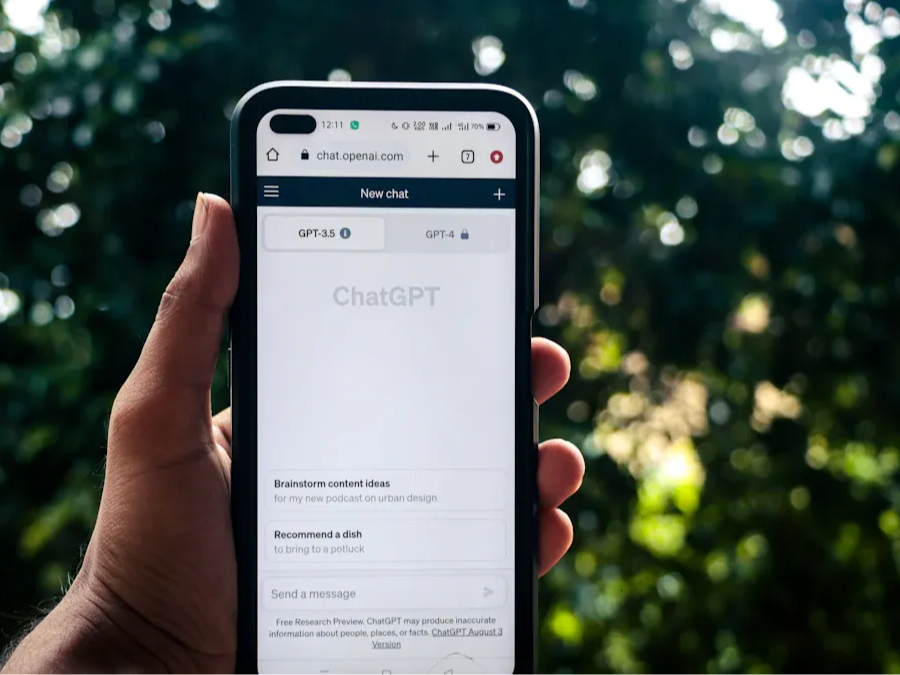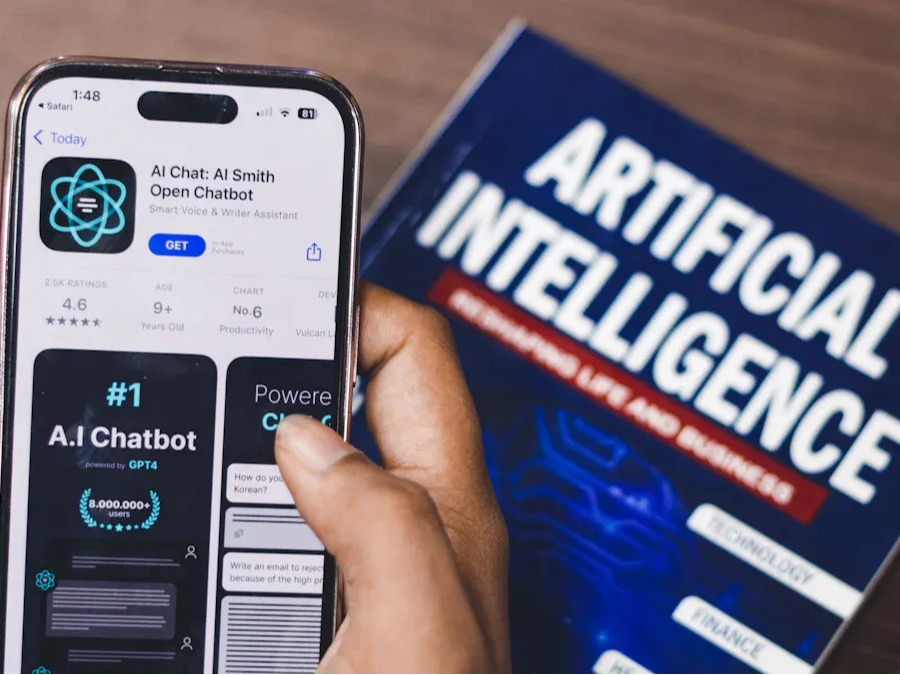You probably use artificial intelligence every day, sometimes without even realizing it. From your phone’s voice assistant to smart home devices, AI systems influence how you live, work, and play. Over 100 million people use ChatGPT monthly, and 77% of devices in use today include some form of AI technology. The AI advantages are clear, offering benefits like making tasks easier and faster. However, these tools also come with downsides such as privacy concerns and job shifts. Take a look at how the pros and cons of AI impact your life—do you notice more advantages or challenges?
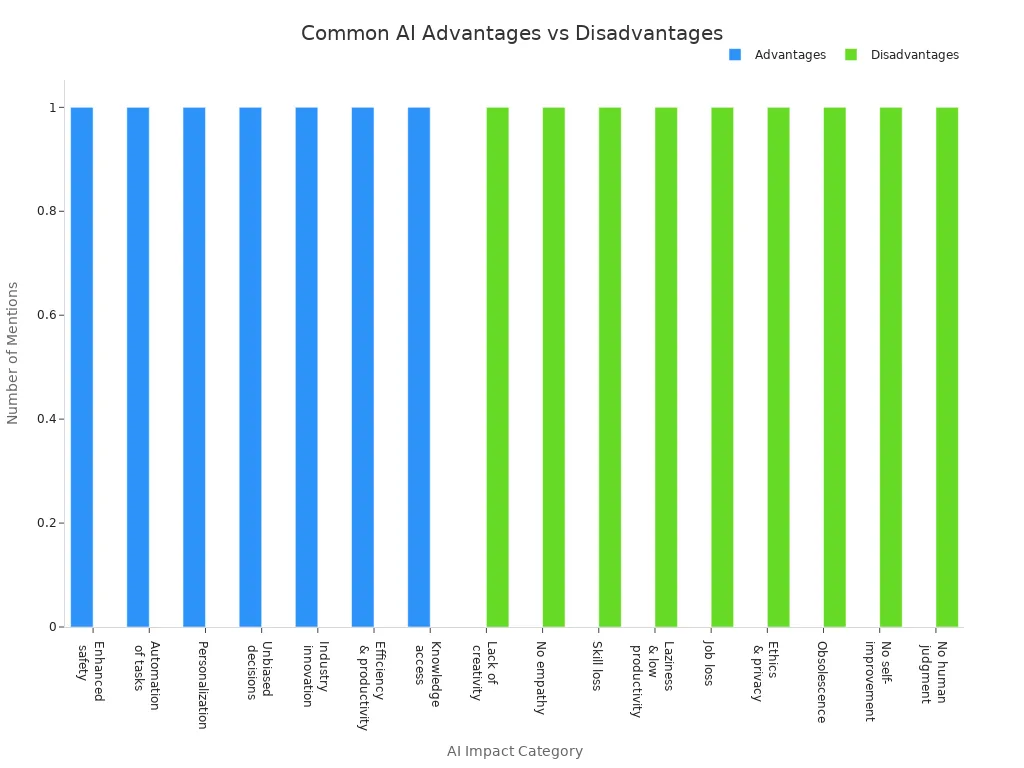
Key Takeaways
- AI makes daily tasks easier by automating routine work and saving time.
- AI improves efficiency and personalizes experiences to fit your needs.
- AI helps you make faster, smarter decisions with reliable data analysis.
- AI works 24/7, giving you support anytime without delays.
- Be aware of AI’s challenges like job changes, privacy risks, and bias, and use AI wisely to stay in control.
AI Advantages
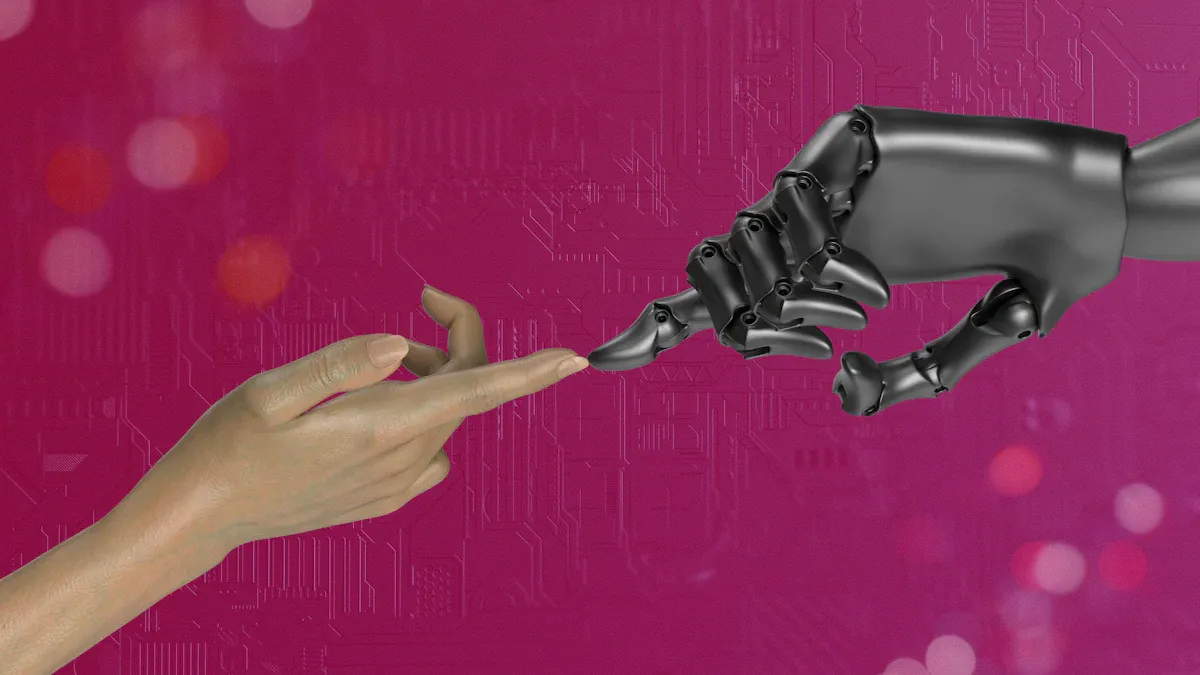
Automation
You see automation everywhere these days, thanks to artificial intelligence. AI automates repetition in both homes and workplaces, making life easier and freeing up your time for more important things. For example, smart devices like robot vacuums clean your floors while you relax. Digital assistants such as Alexa or Google Assistant handle reminders, set alarms, and even control your lights. In offices, AI applications process invoices, sort emails, and schedule meetings without human help. Here are some ways AI-powered automation is transforming the way we work and live:
- AI reads and sorts documents, reducing mistakes and saving hours.
- It manages data entry and invoice processing, so you don’t have to.
- AI collects and analyzes data to help businesses make better choices.
- It personalizes learning and offers instant support through chatbots.
- AI even helps companies move offices by organizing resources and schedules.
You get more done with less effort, and you can focus on creative or meaningful tasks instead of boring routines.
Efficiency
AI technology brings increased efficiency to your daily routine. Imagine your digital assistant managing your calendar, sending reminders, and answering questions in seconds. Smart home devices, like thermostats and lights, learn your habits and adjust automatically to save energy and money. AI-powered appliances, such as smart refrigerators and washing machines, remember your preferences and optimize their performance. Even robotic vacuums like the Roomba use AI systems to map your home and clean more effectively.
AI applications in the workplace also boost efficiency. For example, AI can analyze huge amounts of data quickly, helping teams spot trends and make smarter decisions. This means less time spent on repetitive work and more time for important projects. Studies show that AI can improve process efficiency by up to 20% when used well.
Tip: Let AI handle the small stuff, so you have more time for what matters most.
Personalization
One of the biggest advantages of artificial intelligence is personalization. AI learns your likes and dislikes, then tailors experiences just for you. When you shop online, AI applications suggest products based on your browsing and buying history. Streaming platforms like Netflix and Spotify recommend movies and music you’ll probably enjoy. Even wearable health devices use AI to track your activity and offer personalized recommendations for workouts or sleep.
- E-commerce sites like Amazon suggest items you might need next.
- Streaming services create playlists and show lists based on your tastes.
- Virtual stylists recommend outfits by analyzing your style and trends.
- Health apps monitor your habits and give tips to improve your well-being.
AI-driven personalization leads to higher satisfaction. For example, companies using AI see a 50% boost in conversion rates and a 36% increase in customer lifetime value compared to manual methods.
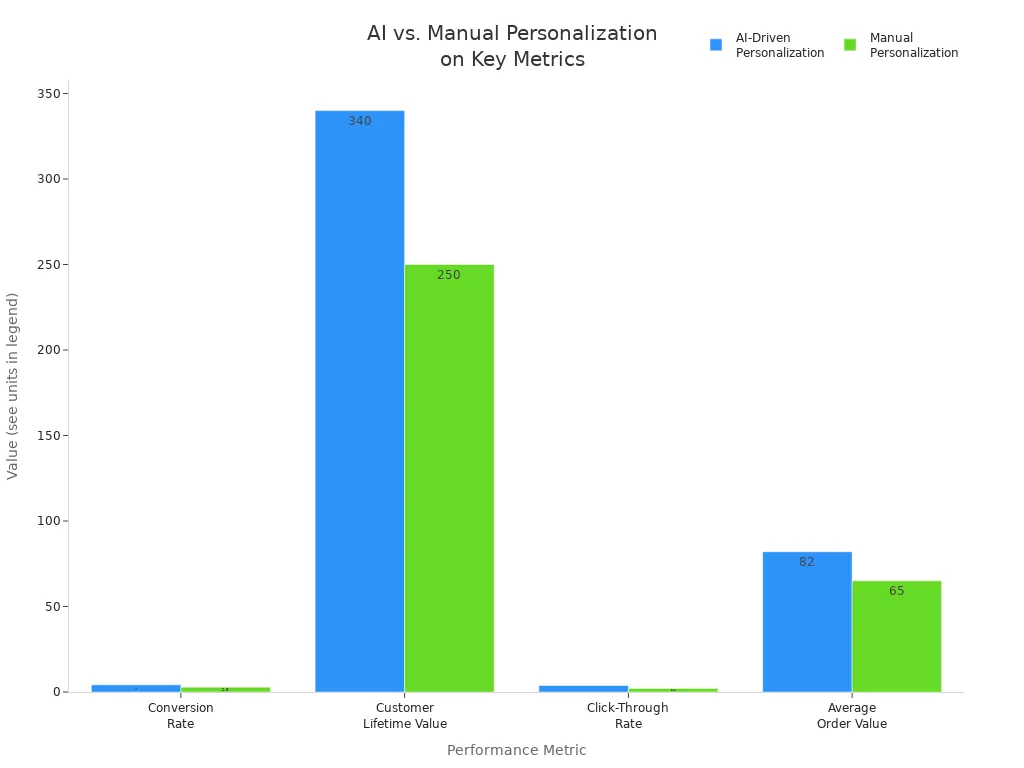
Decision-Making
AI systems help you make better choices every day. Whether you’re picking a movie, shopping for electronics, or planning a trip, AI applications analyze tons of information to give you the best options. For example, Netflix and Spotify use AI to match you with shows or songs you’ll love. In finance, robo-advisors suggest smart investments based on your goals. AI even helps doctors diagnose illnesses faster and more accurately.
A recent study found that AI-powered decision support systems process data much faster than humans and reach over 80% accuracy in tasks like financial forecasting. This means you get reliable advice quickly, which facilitates faster decision-making and reduces stress.
| Aspect | AI-Powered Decision Support Systems | Human Decision-Making |
|---|---|---|
| Speed | Processes large volumes of data/images much faster than humans | Slower, limited by human cognitive and physical speed |
| Accuracy | Excels in repetitive, well-defined pattern recognition tasks; >80% accuracy in financial forecasting | Performs better in novel, complex, or context-dependent scenarios; ~60% accuracy in traditional forecasting |
| Adaptability | Real-time data processing and adaptive learning (e.g., market changes) | Limited adaptability to rapid data changes |
| Limitations | Bias, overfitting, lack of contextual understanding | Bias, fatigue, overconfidence |
| Hybrid Approach | Combines AI speed and scalability with human contextual understanding and accountability | Optimal solution combining strengths of both |
24/7 Operation
AI advantages include always-on service. AI systems never sleep, so you get help whenever you need it. Chatbots answer your questions about orders, banking, or tech support at any hour. Virtual assistants like Bank of America’s Erica handle millions of customer requests every day, providing instant answers to routine questions. Even healthcare uses AI-powered voice chatbots to help patients schedule appointments or get information at any time.
- AI chatbots provide support day and night, reducing wait times.
- You can track orders, check account balances, or get troubleshooting help instantly.
- Companies like Tata Play and Motel Rocks use AI bots to handle thousands of requests, improving customer satisfaction.
This round-the-clock availability means you never have to wait for business hours, making life more convenient and stress-free.
Error Reduction
AI systems help reduce mistakes in many areas of life. In financial management, AI automates compliance and reporting, catching errors that humans might miss. Hospitals use AI to schedule appointments and manage billing, which lowers the risk of costly mistakes. Even in everyday tasks like navigation or scheduling, AI applications provide accurate suggestions and reminders, helping you avoid double-booking or getting lost.
A study from IBM found that 57% of CFOs saw fewer sales forecast errors after using AI. AI also produces consistent results without getting tired, unlike humans who can make mistakes when they’re exhausted. When experts use explainable AI tools, their accuracy improves even more, showing that AI-assisted tasks can outperform human-only efforts.
Note: AI is especially helpful for high-volume, low-risk tasks where accuracy matters most.
AI advantages touch almost every part of your daily life. From automating chores to offering personalized recommendations and reducing errors, artificial intelligence is transforming the way we work and live. As AI applications continue to grow, you’ll likely see even more benefits in the future.
AI Disadvantages

Job Displacement
You might notice that artificial intelligence is changing the job market. Many companies use AI to automate tasks that people once did. This shift can lead to job loss or major changes in the workplace. Entry-level white-collar jobs are especially at risk, with AI able to automate up to 70% of some roles. Even though fewer than 17,000 jobs in the U.S. were lost to AI between May 2023 and September 2024, experts predict much bigger changes ahead.
Here’s a table showing what experts expect in the coming years:
| Statistic / Projection | Value | Source / Context |
|---|---|---|
| Employers expecting workforce reductions due to AI automation (2025-2030) | 40% | World Economic Forum survey |
| Global employment exposed to AI | Nearly 40% | International Monetary Fund (IMF) |
| Full-time jobs potentially automated by generative AI | 300 million | Goldman Sachs research report |
| Workers with at least 50% of job tasks disrupted by generative AI | Over 30% | Brookings Institution report |
| Jobs lost in the U.S. due to AI (May 2023 - Sept 2024) | Fewer than 17,000 | Challenger Report tracking job cuts |
| AI job displacement prediction within 15 years | 40% of global jobs | Kai-Fu Lee interview on 60 Minutes |
You might wonder what can help. Some ideas include retraining programs, stronger social safety nets, and even a four-day workweek as AI boosts productivity. Companies can also help by supporting workers as they learn new skills or move into new roles. These steps can make the pros and cons of artificial intelligence feel more balanced for everyone.
Privacy Concerns
AI collects a lot of personal data from your devices, apps, and online activities. Sometimes, you may not even know what information is being gathered. This raises big privacy and data security concerns. AI can predict sensitive details about you, sometimes even from harmless data. It can also group people in ways that lead to unfair treatment or discrimination.
Some real-world incidents show how serious these risks can be:
| Incident | Date | Entity | AI Involvement | Impact/Details |
|---|---|---|---|---|
| T-Mobile Breach | November 2022 | T-Mobile | AI-equipped API used for unauthorized access | 37 million customer records stolen, including full names, contact numbers, and PINs. |
| Activision Breach | December 2022 | Activision | AI-generated phishing SMS messages | Employee database compromised (emails, phone numbers, salaries); breach quickly mitigated. |
| TaskRabbit Breach | April 2018 | TaskRabbit | AI-enabled botnet in DDoS attack | Over 3.75 million user records affected; personal and financial data stolen; site temporarily shut down. |
| Yum! Brands Breach | January 2023 | Yum! Brands | AI used to automate ransomware targeting | Employee and corporate data compromised; nearly 300 UK branches closed for weeks. |
You might remember the Facebook-Cambridge Analytica scandal, where millions of users’ data was used without consent to influence elections. Even fitness apps have accidentally revealed sensitive locations. These examples show why data privacy concerns are a major part of the disadvantages of artificial intelligence.
Tip: Always check app permissions and privacy settings. Stay alert to how your data is used.
Lack of Creativity
AI can process huge amounts of information and follow instructions, but it struggles with creativity. You may notice that artificial intelligence can generate art, music, or stories, but it often just mixes up things it has already seen. AI systems do well with tasks that have clear rules, but they can’t come up with truly new ideas or solve problems in unique ways like humans do.
For example, when you use an AI art tool, it creates images based on patterns from its training data. It doesn’t understand feelings or context the way you do. In fields like art, design, and content creation, this means AI can help with routine work, but it can’t replace the spark of human imagination. The best results often come when people and AI work together, combining efficiency with real creativity.
Bias
AI systems learn from data, and sometimes that data includes hidden biases. This can lead to unfair or even harmful results. You might see this in hiring tools, loan applications, or even facial recognition. For example, Amazon once used an AI recruiting tool that favored male candidates over female ones. In healthcare, an algorithm under-identified Black patients who needed extra care because it used spending as a stand-in for medical need.
Here are some real-world cases of bias in AI:
| Case | Description | Impact |
|---|---|---|
| Amazon Recruitment Bias | AI tool penalized resumes with “women’s” terms and graduates of women’s colleges. | Discrimination against female candidates. |
| COMPAS Recidivism Algorithm | Labeled Black defendants as high-risk more often than white defendants. | Racial bias in criminal justice. |
| Healthcare Algorithm Bias | Used spending as a proxy for need, under-identifying Black patients. | Black patients received less support. |
| Apple Credit Card Gender Bias | Lower credit limits for women with similar financial profiles as men. | Gender discrimination. |
| LinkedIn Job Recommendation Bias | Favored male candidates in job searches. | Gender bias in hiring. |
| Facial Recognition Bias | Higher error rates for dark-skinned females. | Racial and gender bias. |
You can help reduce bias by supporting diverse teams, using fairness audits, and keeping humans involved in important decisions. Companies now use special tools and guidelines to spot and fix bias, but it’s still a challenge.
High Costs
AI can be expensive, especially for small businesses or personal use. If you want a custom AI solution, you might pay $50,000 or more just to get started. Even pre-built tools like chatbots can cost $10,000 to $20,000 upfront, with monthly maintenance fees ranging from $100 to $5,000 depending on complexity. There are also hidden costs, like upgrading your computer systems, hiring experts, and training staff.
You can save money by starting with simple, cloud-based AI tools or using free resources. Still, the high price tag can make it hard for smaller companies to keep up, which can widen the gap between big and small businesses.
Over-Dependence
It’s easy to let AI handle more and more of your daily tasks. But if you rely too much on artificial intelligence, you might notice your own skills start to slip. Studies show that people who use AI for everything—from writing to decision-making—may lose some of their critical thinking and creativity. You might find yourself accepting AI’s answers without double-checking or thinking deeply.
For example, students who use AI chatbots for homework sometimes struggle to solve problems on their own later. Workers who let AI handle all their scheduling or emails may forget how to manage these tasks themselves. Over time, this can lead to skill loss and make it harder to spot mistakes or handle new challenges.
Note: Try to use AI as a helper, not a replacement for your own thinking.
Ethical Issues
AI brings up many ethical questions. You might wonder who is responsible if an AI-driven car causes an accident, or if an AI system makes a biased decision. Some of the most common ethical dilemmas include:
| Ethical Dilemma | Description | Real-life Example(s) |
|---|---|---|
| Algorithmic Bias | AI systems inherit human biases from data or programming, leading to unfair decisions. | Amazon’s AI recruiting tool penalized women; Dutch childcare benefits scandal wrongly accused families of fraud. |
| Transparency & Explainability | Hard to understand how AI makes decisions, which can reduce trust. | N/A |
| Autonomous Systems Accountability | Unclear who is liable for AI-driven machines’ actions. | Uber self-driving car fatality in 2018; legal debates on responsibility. |
| Unemployment due to Automation | AI replacing jobs, causing economic and social worries. | 27% of US citizens fear job loss within 5 years due to AI. |
| Misuse of AI Surveillance | AI-powered surveillance can invade privacy and enable profiling. | Microsoft called for regulation; IBM stopped selling facial recognition for mass surveillance. |
| Manipulation of Human Judgment | AI used to influence or manipulate people’s choices. | Facebook-Cambridge Analytica data scandal influencing 2016 US elections. |
| Proliferation of Deepfakes | Fake media spreads misinformation and erodes trust. | Deepfake videos misrepresenting political leaders. |
You can see that the pros and cons of artificial intelligence go far beyond convenience. Ethical issues touch on fairness, privacy, and even democracy. As AI becomes more common, you’ll need to think carefully about how it’s used and who controls it.
Remember: The best way to handle the disadvantages of artificial intelligence is to stay informed, ask questions, and use AI responsibly.
Advantages and Disadvantages of AI
Artificial Intelligence Pros and Cons
You see the advantages and disadvantages of AI in almost every part of your day. AI helps you draft emails, find answers, and even create music or art. It can boost your productivity and make learning or working more fun. You get personalized suggestions, faster service, and fewer mistakes. At the same time, the pros and cons of artificial intelligence include some big challenges. You might worry about privacy, job loss, or unfair decisions. Sometimes, AI systems make choices you do not understand or agree with. Here’s a quick look at the artificial intelligence pros and cons:
- Pros:AI handles boring or repetitive tasks for you.It gives you creative tools and new ways to learn.You get help with decisions and enjoy more free time.
- Cons:AI can be used in ways that are not fair or safe.It may replace jobs or make mistakes that affect people.You might lose control over how decisions are made.
You need to weigh the pros and cons of using AI to decide what works best for you.
Balancing Use
Finding the right balance with AI means using it to help you, not replace you. You can let AI handle simple chores or give you suggestions, but you should always check its work. Many experts say you should learn how AI works and ask questions if something feels off. Companies now train workers to use AI safely and teach them new skills. This helps everyone get the most out of AI while staying safe.
Tip: Use AI as a tool, not a crutch. Keep learning and stay curious about how it works.
Here are some ways to balance the advantages and disadvantages of AI in your life:
- Set limits on how much you rely on AI for important choices.
- Double-check AI’s answers, especially for big decisions.
- Keep learning new skills so you can adapt as AI changes.
Responsible Adoption
You play a big part in making sure AI helps more than it harms. Start by learning about privacy settings and how your data is used. Choose apps and devices that explain how they use AI. Support companies that value fairness and transparency. You can also talk with friends and family about the pros and cons of artificial intelligence, so everyone stays informed.
- Build trust by learning how AI works and sharing what you know.
- Ask questions about how your data is used and stored.
- Look for tools that let you see and control AI’s decisions.
If you use AI thoughtfully, you can enjoy the advantages and disadvantages of AI without giving up control. Responsible adoption means you get the benefits while keeping risks in check.
You’ve seen how AI can make your life easier, but it also brings some challenges. To get the most out of AI, keep these points in mind:
- Stay curious and try new AI tools, but always check how they use your data.
- Look for user-friendly features that fit your needs.
- Talk with others about your experiences and learn together.
| Consideration Category | Key Points |
|---|---|
| Personalization | Choose AI that matches your style and preferences. |
| User Experience | Pick tools that feel easy and fun to use. |
| Ethical Considerations | Think about privacy, security, and fairness before you decide. |
Keep learning and stay alert as AI keeps changing. You’ll make smarter choices and enjoy the benefits while avoiding the risks.
FAQ
What is the biggest benefit of using AI every day?
You save time and energy. AI can handle boring chores, answer questions, and help you make choices. You get more free time for things you enjoy.
Can AI make mistakes?
Yes, AI can make mistakes. Sometimes it gives wrong answers or misses important details. Always double-check important things. Trust your own judgment, too.
How can you keep your data safe when using AI?
Check app permissions before you use them. Use strong passwords. Read privacy settings and updates. If you feel unsure, ask someone you trust for help.
Will AI take over all jobs?
AI will change many jobs, but people will always need to work. Some jobs may disappear, but new ones will appear. Learning new skills helps you stay ready.
Is AI always fair?
No, AI is not always fair. Sometimes it learns from bad data and makes unfair choices. People need to watch for bias and fix problems when they find them.

